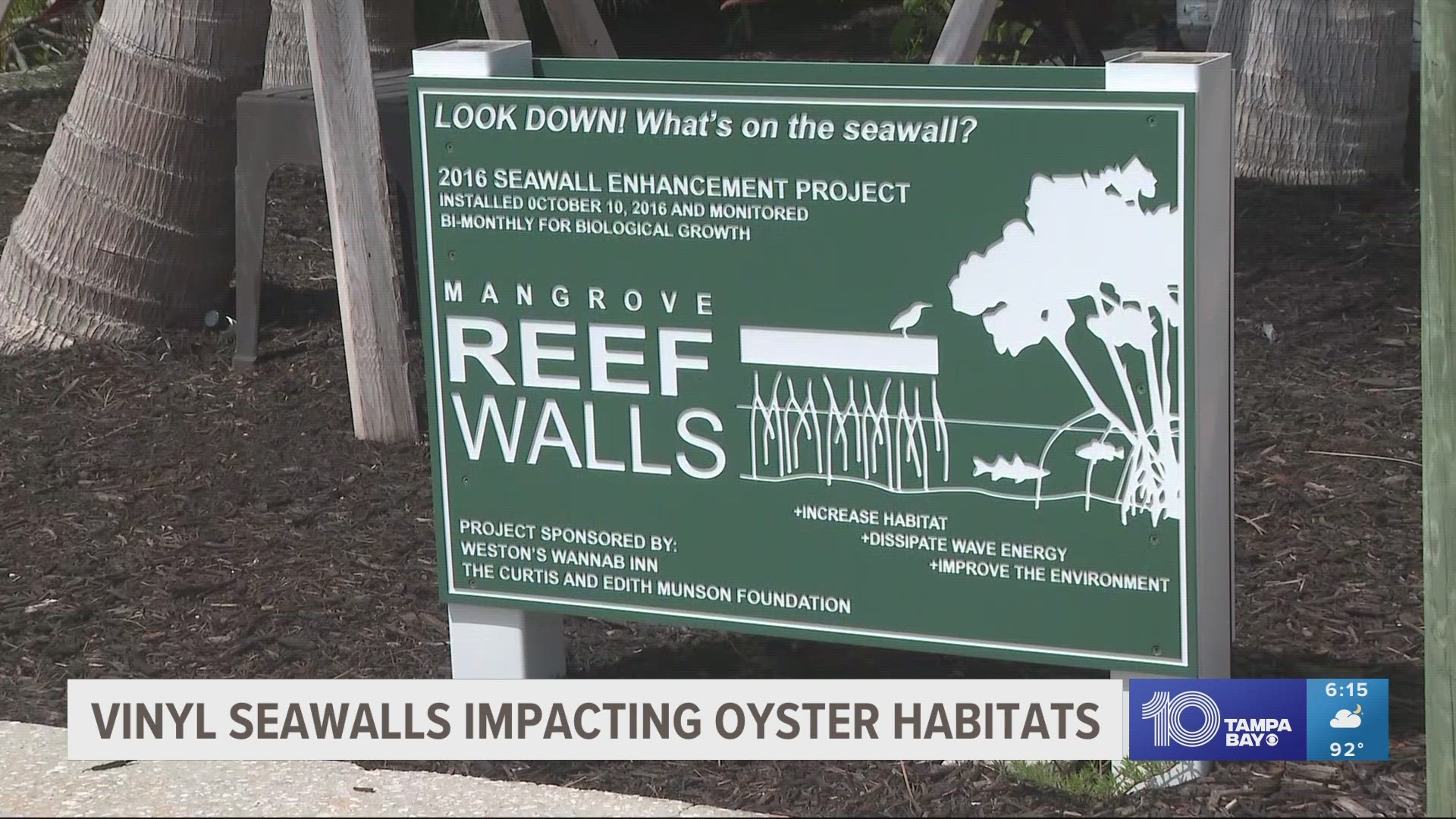SARASOTA, Fla. — There's growing concern among Tampa Bay area researchers about the impact of non-concrete seawalls on sea life habitats.
Aside from protecting waterfront property and shorelines from things like high tide and erosion, seawalls are also among some of the important artificial habitats for oysters. However, researchers say the increase in the use of vinyl sea walls, instead of concrete, is impacting oyster growth and replenishment.
According to Sarasota Bay Sanctuary program researchers, vinyl seawalls are fast replacing concrete because of cost and durability. This, they say, is preventing oyster reefs from forming and could, in turn, affect water quality.
"One of our largest oyster reef habitats are these concrete seawalls and they are being replaced with the type that doesn't grow oysters very well," Dave Tomasko with the Sarasota Bay Sanctuary program said.
Tomasko and his team studied several seawalls in the area and their findings raised troubling concerns.
Of 32 seawalls studied, 16 of which were made of plastic-vinyl material and 16 made of concrete, scientists observed oysters that were not attaching correctly to the vinyl ones compared to the concrete ones.
"That's an issue in terms of our water quality because oysters filter thousands of gallons of water a day and so, we spent a lot of money putting oyster reefs into the Tampa Bay and Sarasota Bay. This is losing a lot of oysters by doing this replacement," Tomasko said.
The researchers have come up with what they say could be a potential solution. SBEP is now working on a shoreline project in partnership with the town of Long Boat Key to help show other waterfront communities how to solve this problem. Under the pilot project, they plan to install concrete mangrove-like panels over the vinyl seawalls. The stem-like grids would help the oysters attach properly.
Before Longboat Key's seawalls became a target for the project, researchers had already set up an example in Englewood as far back as 2016. That sample panel has already shown positive signs in helping restore artificial oyster reefs on seawalls.
Researchers hope property owners who have existing vinyl seawalls or those who intend to install them to save money and see the benefits of adding the mangrove concrete panels.
"Since you live on the water, you're the person that has the best benefit from improving our water quality. Maybe you can find a way to do a concrete sea wall but if you can't, maybe this is a way to lessen some of the impact of losing these oysters by replacing concrete with plastic," Tomasko said.
The panels will be placed all along the shoreline of the Bayfront Park in Long Boat Key. The project costs around $500,000 and is funded under the Bipartisan Infrastructure Law.

